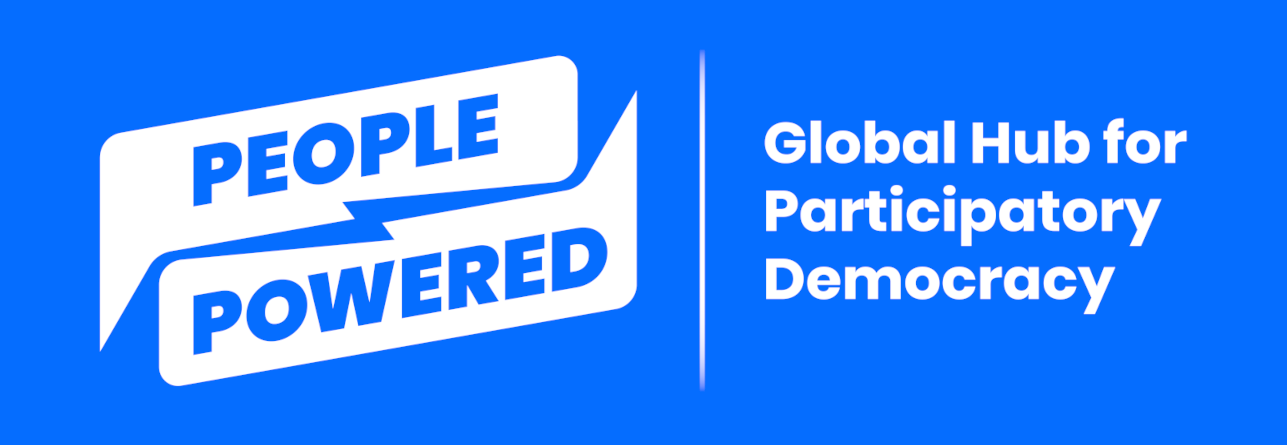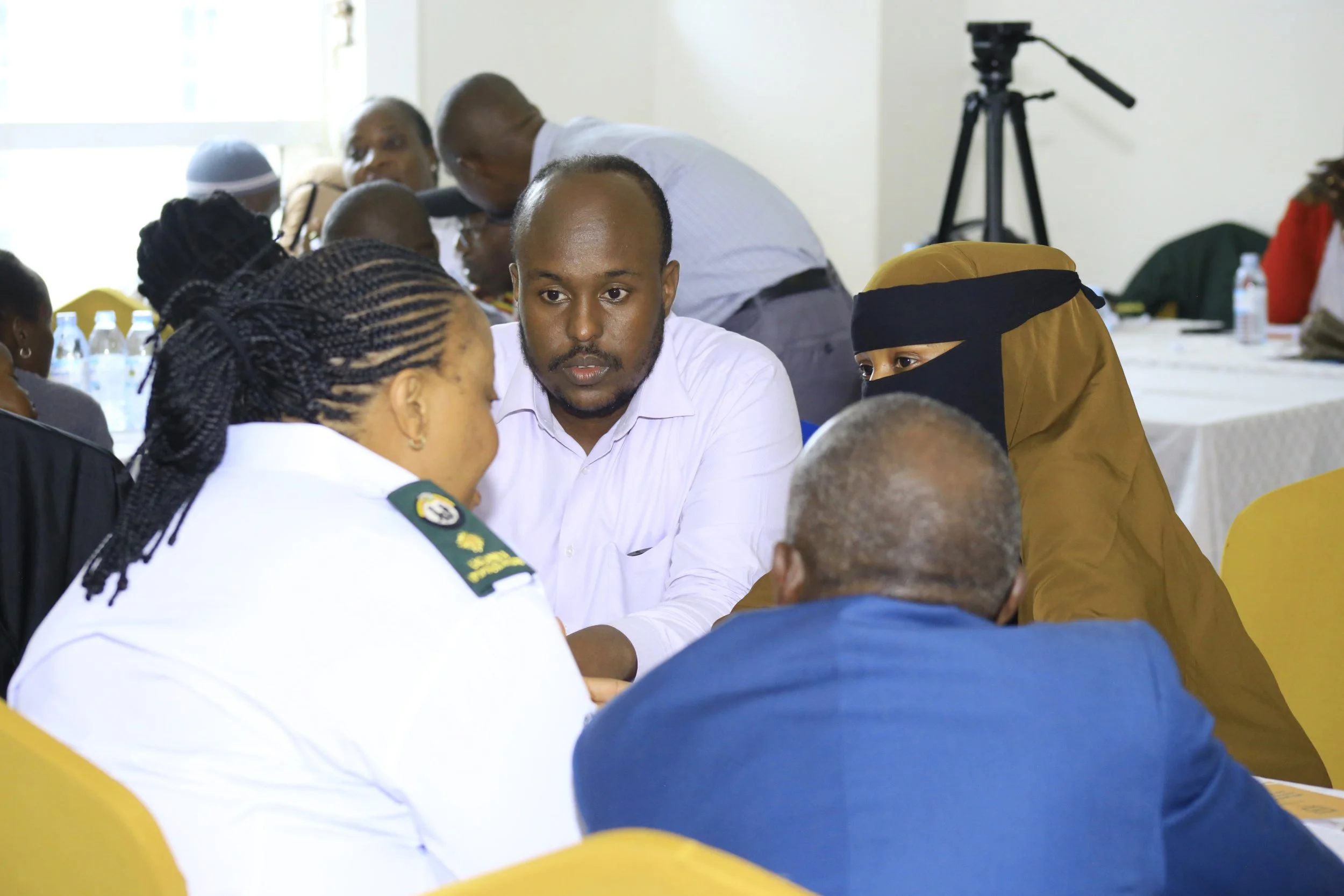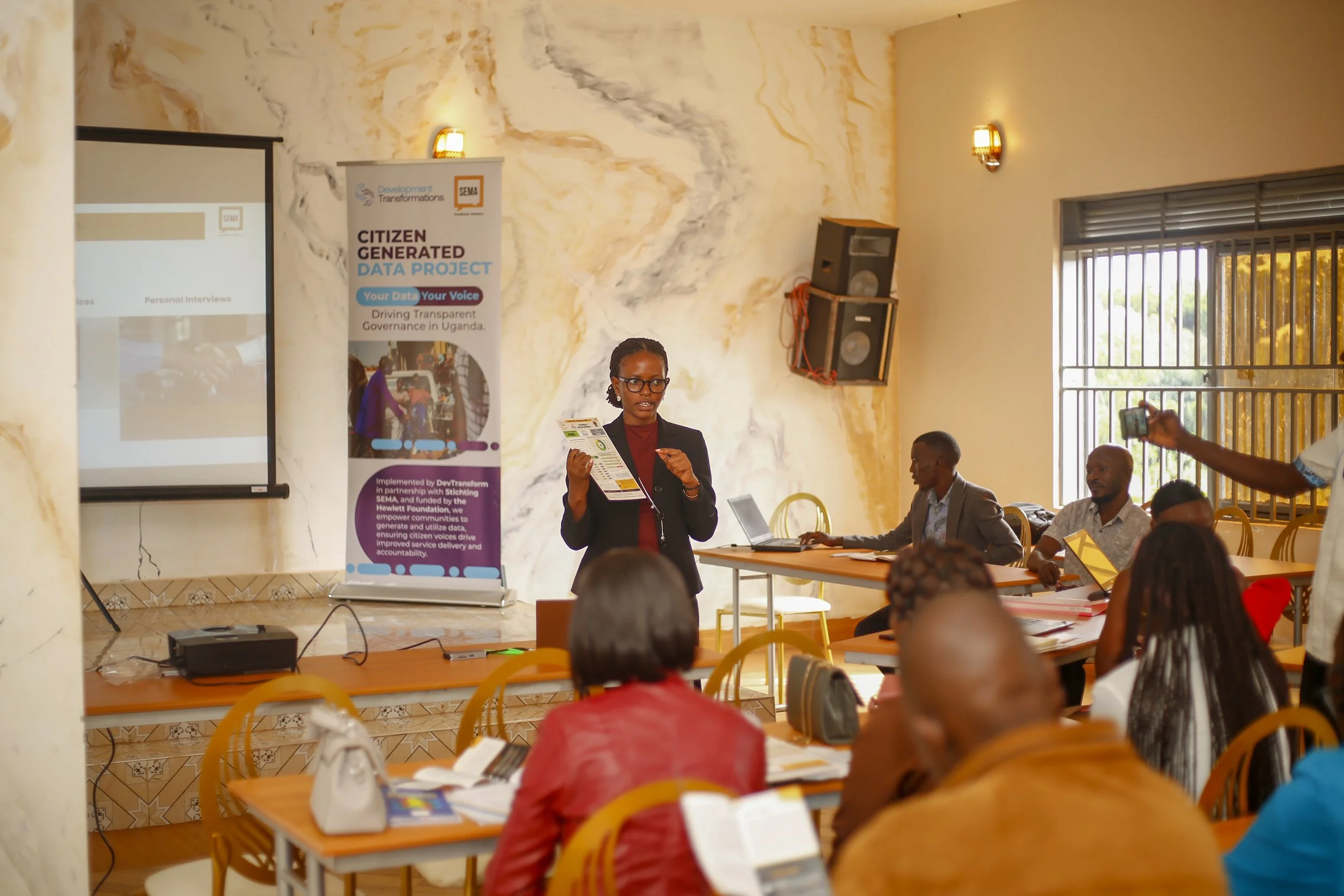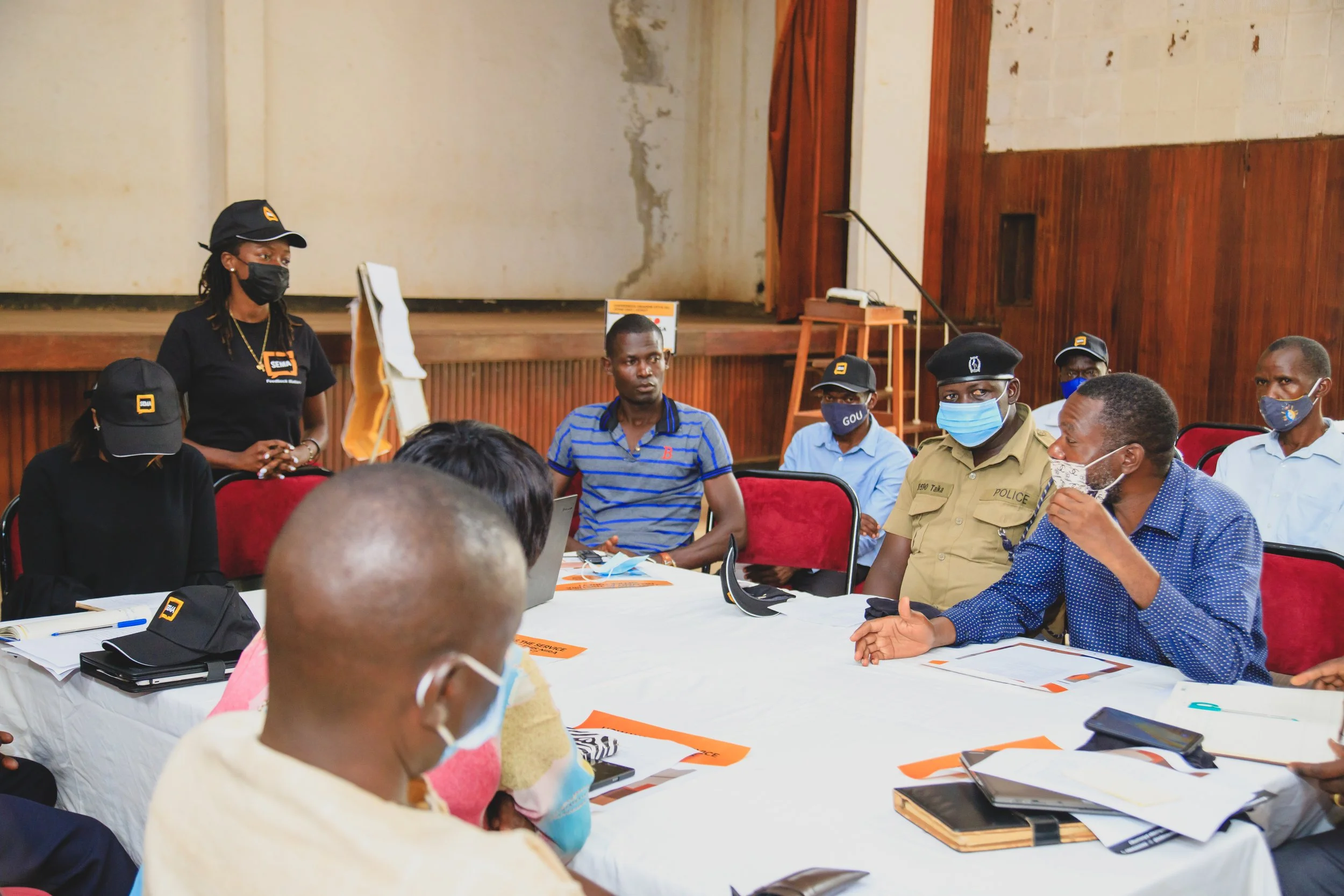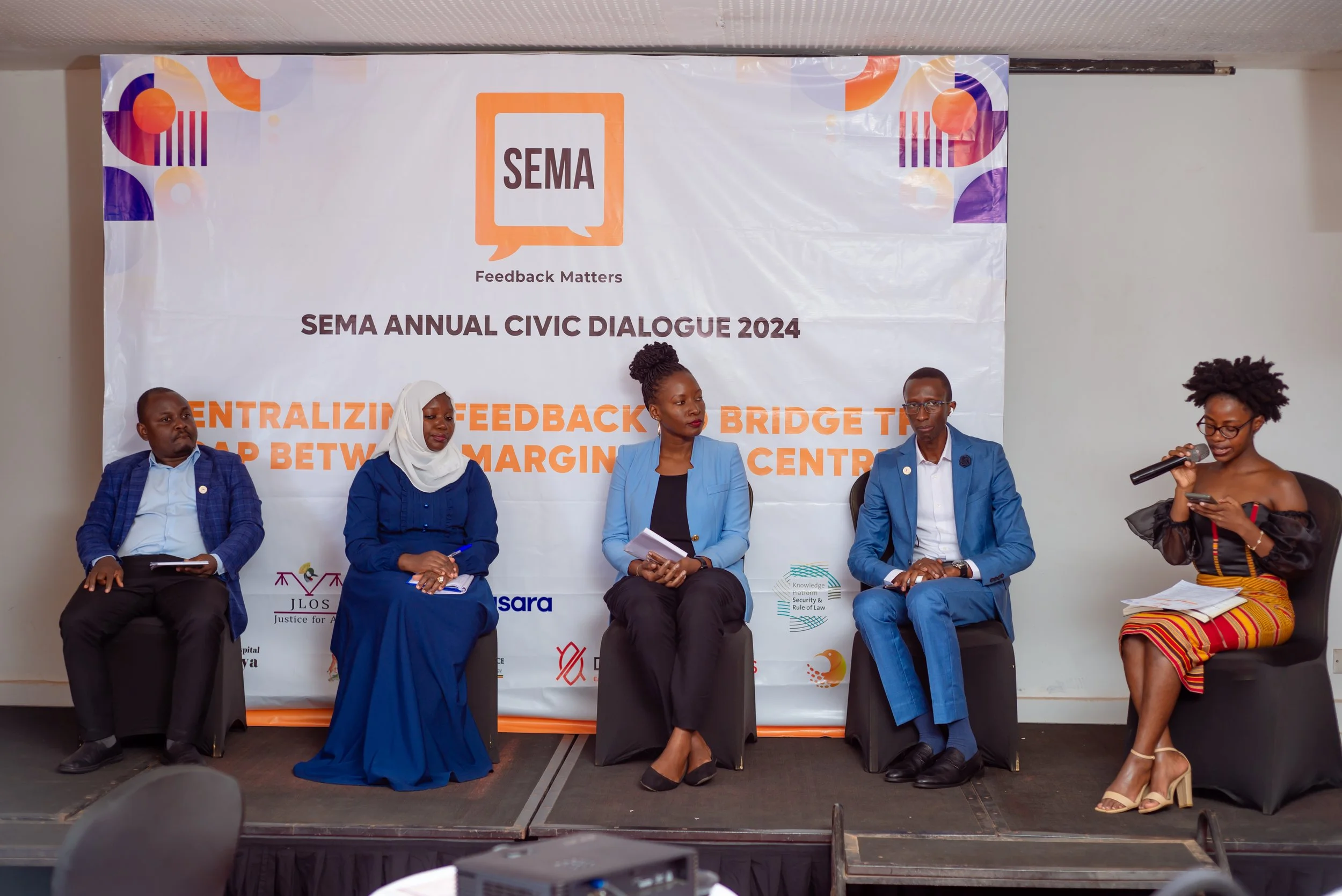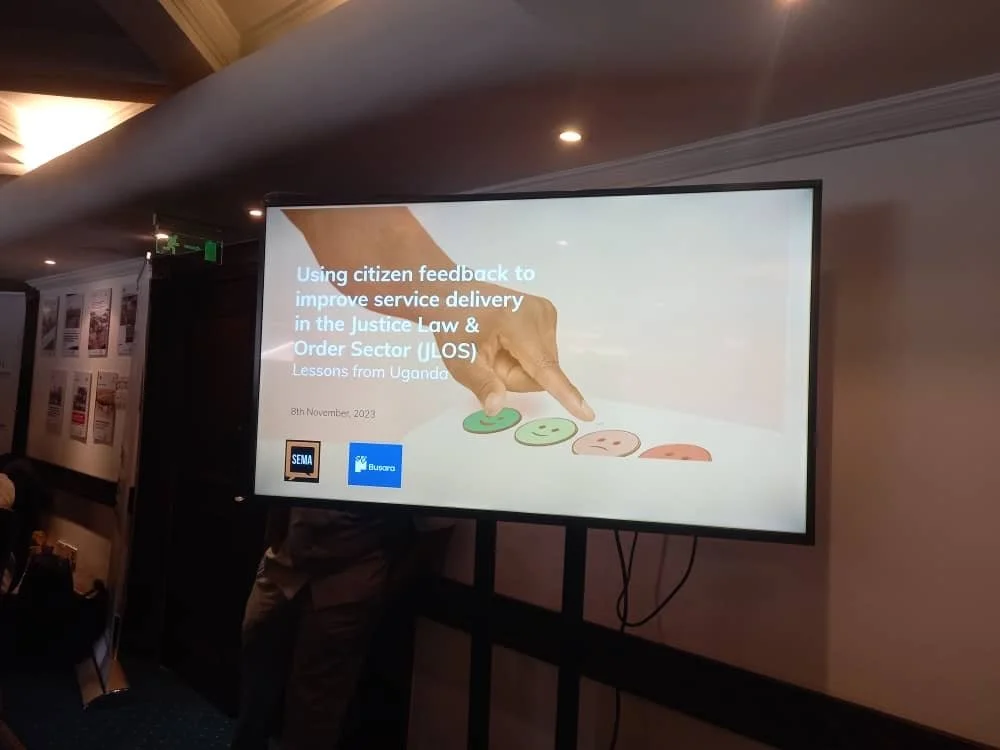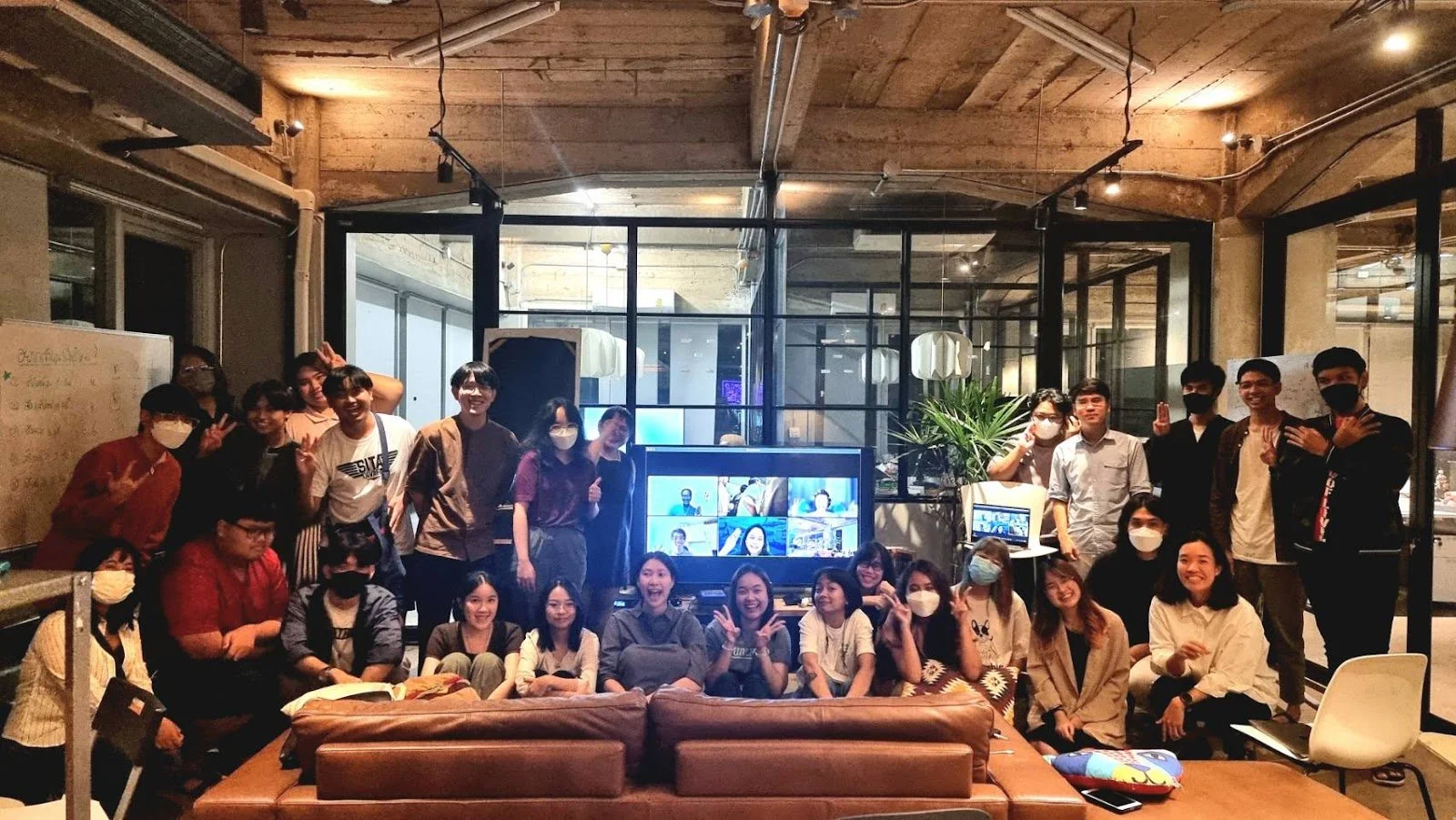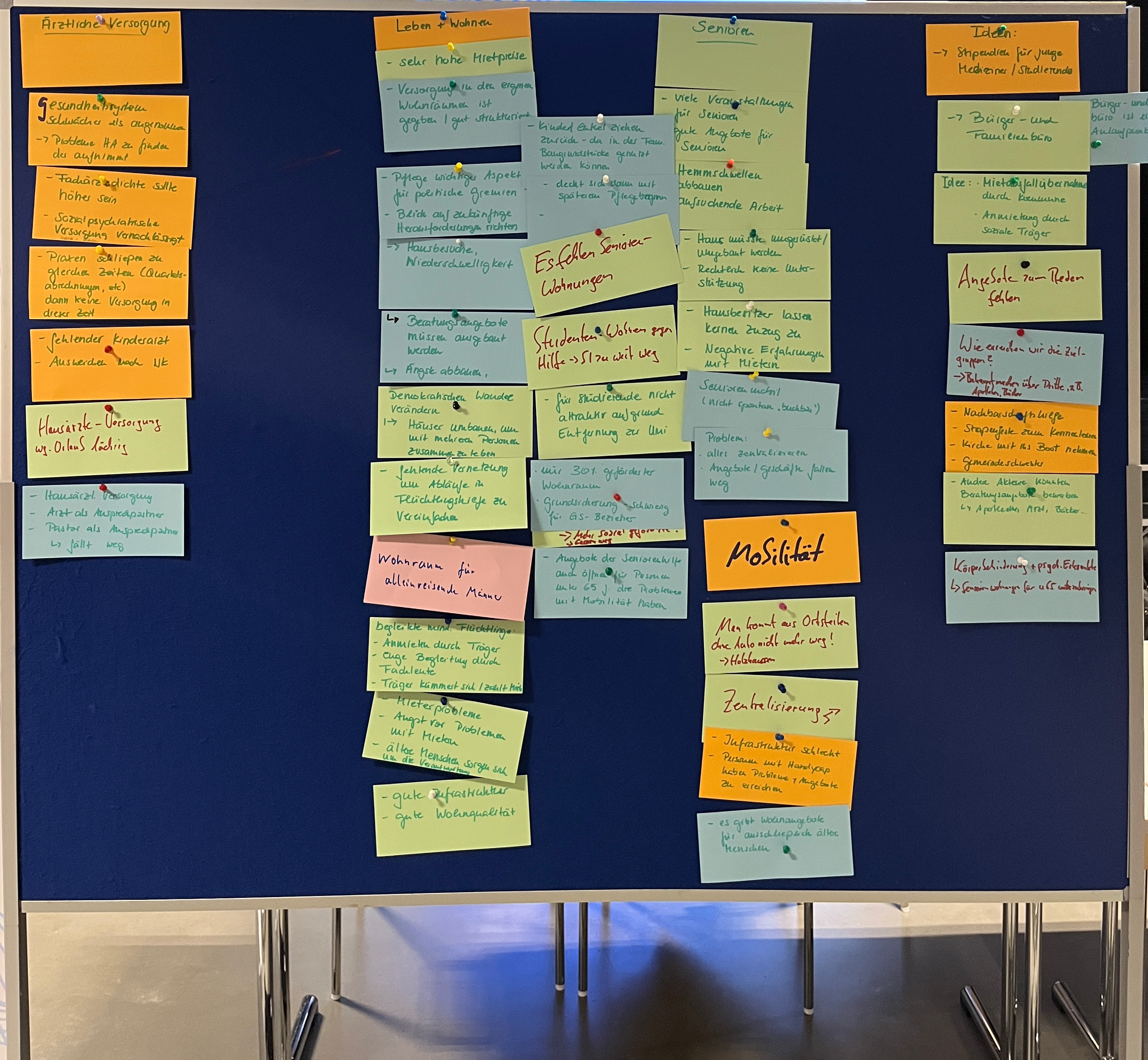Listening to communities: How SEMA is using low-tech and AI to improve public services in Uganda
/Source SEMA
This is part of a series of stories on digital participation platforms produced with support from the Friedrich Naumann Foundation’s Global Innovation Hub, Taipei. To read others in the series, see these case studies from Northern Ireland and Colombia.
Across Uganda, ordinary citizens in different communities often face various barriers when trying to voice concerns about the quality of public services. Many lack the time, resources, or confidence to speak up, yet their feedback, input, and experiences are vital for building better institutions that work for everyone. SEMA, a Ugandan civic tech and data-driven organization, is changing this reality by making citizen feedback simple, accessible, and impactful. By combining low-tech solutions with cutting-edge AI, SEMA is helping people from all walks of life anonymously share their experiences with police stations, health centers, and local governments, ensuring those voices reach decision-makers.
SEMA is dedicated to supporting public institutions that use feedback to improve their services. All the information SEMA collects from surveys, device ratings, and voice recordings is analyzed and turned into clear monthly reports for each public office. “By acting as a bridge between communities and institutions, SEMA helps public offices understand what is working well and where they need to improve,” said Joanitah Nsasiirwe, the Team lead.
At its heart, SEMA’s mission is simple: listen to citizens as the true users of public services and translate their needs into practical recommendations for better service delivery. As Nsasiirwe emphasized, “At SEMA, our mission is to make sure that citizens who visit public offices, whether it’s a police station, a health facility, or an immigration office, can raise their voices and be heard in real time. Unlike traditional advocacy that focuses solely on big policy changes or national reforms, we start and focus on the frontline, the local offices where citizens face everyday challenges that urgently need solutions.”
An In-Charge from one of the health facilities in Kampala also commented, “I can promise that we are going to talk about this report in the meeting we are going to, and we promise to change accordingly. The improvement will reflect in the reports in the coming months.”
Source: SEMA
How it works
SEMA was founded to bridge the gap between citizens and public institutions. SEMA uses custom-designed hardware devices and interactive voice response (IVR) technology that make feedback easy and free. Their engagement strategy and tools include:
IoT feedback devices are installed in public service spaces like hospital wards and police stations.
USSD codes (Unstructured Supplementary Service Data), QR codes, and toll-free lines enable people without internet access to participate. SEMA provides USSD codes that don’t require airtime, and QR codes at service points that communities can scan and complete later online.
Telephone and WhatsApp surveys to reach communities where face-to-face contact is limited.
In-person surveys for deeper engagement and direct conversation. SEMA’s trained field staff conduct short surveys, which are typically just 2–3 minutes, right at the public office.
Using tools like Kobo Toolbox, they ask practical questions: What service did you come for? Did you get it? Did you understand the information given? Would you recommend this facility to others?. For example, at hospitals, communities are asked whether they saw a medical worker, understood their diagnosis and treatment, and felt treated with respect.
In partnership with Sunbird AI, SEMA has added audio functionality to its feedback devices. At sites like Kasangati Health Centre IV and Old Kampala Police Station, people can now record voice messages in their own language, describing specific issues, such as out-of-stock medicine or poor staff behavior. Sunbird AI’s language models transcribe and translate this feedback, which is shared anonymously with public offices. Previously, the feedback devices relied on simple emoji buttons, “happy” or “unhappy”, to gauge public satisfaction. While useful, this didn’t fully capture what citizens wanted to say. The new devices now allow people to record voice messages in their preferred Ugandan language. Using Sunbird AI’s custom hardware and language models, these spoken messages are transcribed, translated, and summarized anonymously. This richer, real-time feedback helps institutions respond to specific problems, such as medicine stock-outs at health centers or customer service concerns at police stations.
Lastly, Community Events (Barazas): To close the loop faster, SEMA organizes live community forums, which are known locally as barazas, i.e, public meeting places. These are designed to enable community members and public officials to meet face-to-face to raise concerns and get solutions on the spot, rather than waiting weeks for a formal report.
Through all this data collection, SEMA ensures that it does not collect Personal Identification Information that could lead to the identification of any of the respondents.
Turning feedback into immediate improvements, and sometimes systematic changes
SEMA collects direct feedback from communities about their experiences, from basic needs like whether the washrooms are clean or there’s a shaded waiting area, to whether there are enough staff on duty. SEMA’s goal is to make sure this feedback isn’t just stored away; it gets acted on. For example, when citizens report long waiting times at health facilities due to understaffing, a problem that often can’t be fixed immediately because of national budget cycles, SEMA helps local administrators find practical stopgap solutions. “We’ve seen hospital managers reorganize staff shifts so health workers don’t burn out, or combine services more efficiently. At one facility, training sessions were reorganized so that while one health worker runs a family planning session, another simultaneously provides immunizations, helping more people with fewer hands,” said Nsasiirwe.
A citizen at one of the police stations in Wakiso district commented, “Compared to some years ago when I came to this police station, the service is better. Today, I came to report a case and realized they have added security to the gate, and today they were fast.”
Sometimes the feedback goes beyond local fixes and influences broader changes; for example, SEMA released a report highlighting the lack of food for detained suspects. The report led Uganda’s police headquarters to revise their budget to supply food rations to stations. In practice, this meant that people held for over 24 hours without family support didn’t go hungry; this is an example of a concrete change that started with local voices.
“That said, large policy shifts are always complex. SEMA alone can rarely claim full credit for a national policy change, but we see our role as catalytic, providing evidence that helps push the needle where it needs to move,” Nsasiirwe.
This is how the feedback citizens share with SEMA leads to changes, particularly at the local office level, where small improvements can make a big difference while waiting for longer-term fixes like more staff recruitment or increased budgets. As an officer at a police station in Wakiso district echoed, ”There is a change since SEMA started collecting feedback from citizens, no office wants to be ranked last, so we work so hard so that we do what is expected from us. Work has become easier, and there is a reduction in delays in working with citizens.”
SEMA’s model demonstrates that technology does not have to be high-cost or high-tech to be transformative. By combining simple tools, like Interactive Voice Response (IVR) and USSD, with innovative AI-powered transcription, SEMA and Sunbird AI are empowering citizens to shape the services they rely on daily. SEMA’s pilot with Sunbird AI is already showing promise. Citizens are using the new voice tools to speak up about issues that matter to them, and public institutions are listening. The goal is to expand these devices to more locations, strengthen the underlying technology, and ensure that no voice goes unheard.
“At SEMA, we see the communities as our clients,” says the team lead. “We want them to feel heard, respected, and confident that their feedback will make a difference. When we bring the offices and the communities together, whether through devices or live forums, that’s when real change happens.”
How AI helps bridge the gap
SEMA’s partnership with Sunbird AI has also transformed how they gather and process feedback. Their simple emoji feedback device, which started with just five buttons, now allows citizens to leave voice messages in their own languages. Sunbird AI’s technology translates these voice recordings into English text in real time, overcoming language barriers and saving time, so frontline officers and policymakers can act faster. Many citizens don’t think of this as “AI”; to them, it’s simply a talking machine that finally lets them share what they couldn’t write.
The implementation process
What didn’t work:
Top-down feature assumptions: early prototypes assumed users would readily use a feedback device and easily understand its usage, which lagged its adoption.
Underestimating political and institutional considerations: We at first underestimated how some officials would interpret community feedback approaches (as threats). We thought they would be positively received since they contribute to service improvement.
We also underestimated the need to integrate the feedback mechanisms into already existing accountability mechanisms. This impacted the initial impact of feedback reports delivered to these institutions.
What we changed:
SEMA began piloting its feedback tools in different communities by first understanding community needs, testing reception, and collecting usability feedback on how the tools could be improved. This process led to practical adjustments for example, they changed the emojis on the devices. Initially, the multi-colored scale (ranging from red for “very bad” to green for “very good”) was often misunderstood as being linked to political parties during election season, since the colors matched those of party symbols. We also discovered that communities preferred to share more detailed feedback, rather than simply clicking “very good” or “bad.” and we provided USSD as a viable addition for qualitative feedback.
Over time, SEMA has adopted an iterative co-design approach, especially at the local government level, to continuously refine community feedback tools and integrate technology-based solutions into government workflows. Some local governments have even expressed interest in using these tools to gather citizen input on government programs such as the Parish Development Model. “We also strengthened our focus on data governance and legal compliance early in the process, to avoid later challenges under Uganda’s Data Protection and Privacy Act, as guided by NITA-U,” Nsasiirwe.
Navigating political, cultural, and institutional barriers and resistance to technology
During the implementation process, SEMA encountered three overlapping barriers:
Political sensitivity around civic data and public feedback (fear of being seen as partisan)
Institutional caution inside public offices worried about reputational risk, and
Cultural norms about the culture of giving feedback, fear of retaliation, and public apathy.
“To navigate them, we worked slowly and transparently with both communities and public service providers: we opened early dialogues that agreed on shared objectives and obtained formal sign-offs where possible. We framed the feedback tool as service-improvement (not activism) mechanisms, ensured anonymity and data-minimization for the people providing feedback, and involved trusted local intermediaries (local leaders, youth) as champions. This provided institutional buy-in and local legitimacy,” explained Nsasiirwe.
When it comes to the introduction of technology, some people were initially resistant. SEMA noted that the resistance came from various places, including:
Some public servants and agency heads feared exposure of poor performance or political blowback, which was manifested in justice-related offices, unlike health. SEMA facilitated open dialogues on designing and implementing to get a consensus. SEMA also provided real-time feedback data dashboards for institutions to gain direct feedback, and they are able to act upon it instead of shaming them in the media.
Community members who mistrusted SMS/phone prompts or feared surveillance on the device. SEMA addresses this through community education sessions to empower them with knowledge of why feedback matters and how to participate safely. SEMA repeatedly explains confidentiality and the use of data during community meetings.
Building a culture of accountability
One of the biggest changes we’ve seen is in the mindset of both the government officers and the communities. “Many officers used to feel they were doing communities a favor by providing services. Citizens, on the other hand, didn’t always realize they had the right to demand better. It took massive sensitization and repeated engagement for both sides to see this relationship differently. Public servants now better understand their duty to serve, while citizens feel more confident to speak up,” said Nsasiirwe.
When asked if providing feedback matters, a community member from one of the health facilities in Wakiso district answered,“Feedback matters because we can talk about all our concerns and they are presented to the Ministry of Health for change'.”
A cautious but steady approach to participation
Due to Uganda’s political context, we need to operate carefully. But the point is, “SEMA’s goal is not to name and shame, but to open doors for change from within, so we collaborate closely with institutions rather than publicly shaming them. This approach allows SEMA to keep doing its work without risking shutdowns or backlash. While some countries run large digital participation platforms for direct budgeting or policy co-creation, SEMA’s focus remains on consistent, everyday feedback that directly informs practical improvements. “We believe that local, ongoing feedback is just as powerful; it gives officials evidence to advocate for bigger budgets, more staff, or even facility upgrades. Not once a year, but continuously,” shared Nsasiirwe.
“The feedback SEMA gathers drives real changes, from cleaner facilities to better resource allocation. It has also helped foster a culture where citizens and local officials see themselves as partners, not opponents. And while we dream of deeper digital participation for bigger decisions like budgeting and planning, we remain practical, for now real impact comes from amplifying local voices and helping offices respond better day by day,” Nsasiirwe.
Challenges remain
While SEMA has seen significant impact in the communities it serves, they have also noted various barriers and challenges affecting its work. Connectivity and access to devices remain major issues. According to SEMA, many target users have basic phones or intermittent coverage, which is why SEMA didn't initially roll out with a digital mobile application. This led us to design for toll-free/USSD and offline (IoT feedback devices and In-person interviews) tools rather than smartphone apps. The cost of the device seemed high for public offices. Therefore, SEMA has subsidized the costs of devices through donor support, and public institutions currently have them deployed at these offices free of charge.
Nsasiirwe also shared the lack of sufficient institutional capacity is another issue that’s affecting their participation efforts. “Some public offices lacked the initiative/capacity to act on feedback, which undermined community faith in the system,” explained Nsasiirwe. To address this, SEMA paired the tech with capacity-building and simple, visible action reports through feedback meetings.
Lastly, trust and political risk are also barriers for many citizens. “People feared being identified or punished(retaliation); this reduced willingness to report sensitive issues unless anonymity and safe channels were clear. We introduced clear consent processes and anonymized reporting. SEMA doesn't collect Personal Identification Information,” explained Nsasiirwe.
Reflections and key lessons
Community-centered design as standard practice: Every rollout now begins with co-design sessions to ensure tools reflect the local context, language, and cultural realities — an approach we are also extending to our refugee program. For instance, we replaced color-coded emojis on feedback devices (previously misinterpreted as political symbols) with neutral icons, and we added options for open-ended feedback to capture richer insights.
Institutional ownership: To reduce resistance, we actively involve public officials in the design process, aligning tools with institutional priorities such as client charters and strategic plans. This integration ensures that feedback loops are embedded within existing workflows rather than being perceived as external monitoring.
Data protection and compliance: We developed clear data governance SOPs that align with Uganda’s Data Protection and Privacy Act, ensuring that privacy and accountability are built into every deployment.
Impact at the office level: Initially, we defined impact as large-scale policy change that would be visible quickly. Over time, we have learned that meaningful impact often begins with small, tangible improvements at the office level — such as reducing waiting times or addressing stockouts. These incremental changes not only enhance service delivery but also lay the foundation for broader institutional policy shifts, building trust in both the tool and the institutions using it.
Lessons from SEMA
To start with, people, not technology, and prioritize co-designing with communities and institutions to ensure tools fit local languages, cultural norms, and real service gaps.
Design for low bandwidth and offline use, since digital literacy, infrastructure, and trust remain uneven.
Secure institutional buy-in early so the tools are embedded into existing workflows rather than seen as external monitoring, and build strong data protection practices from the outset to address privacy concerns.
Focus on small, visible wins that demonstrate value quickly, as these build trust and momentum for longer-term policy or systemic change.
Ready to explore further?
Visit the People Powered Digital Participation Platform Guide and ratings.
Sign up for coaching by an experienced mentor.
Subscribe to the People Powered newsletter if you have not already, to learn about upcoming workshops, courses and other learning opportunities.



